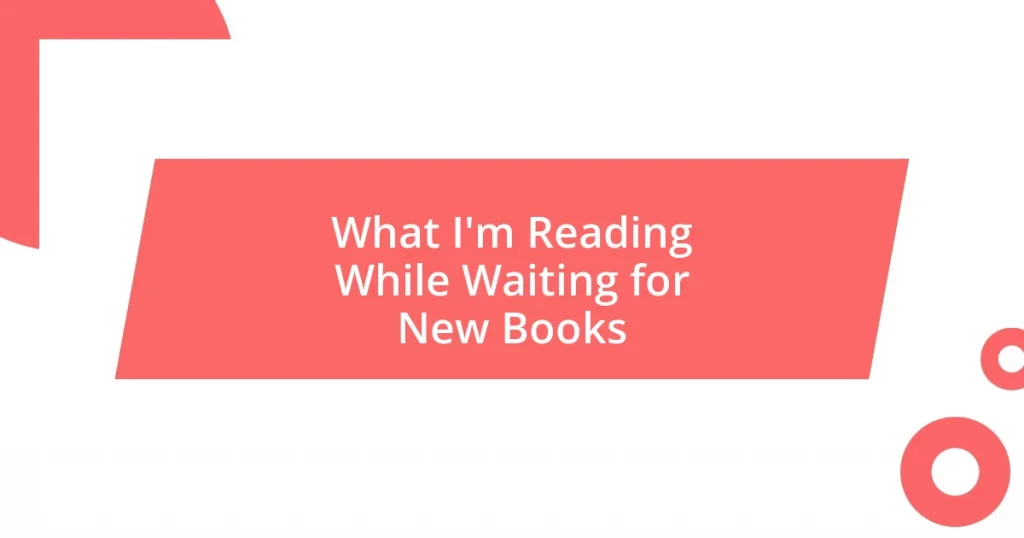Key takeaways:
- The tactile feedback of mechanical keyboards significantly enhances the typing experience, providing comfort and reducing strain during long sessions.
- Customization options, such as different switch types, allow users to tailor their keyboard experience, making it more personal and enjoyable.
- Regular maintenance, including cleaning and checking stabilizers, is essential to prolong the lifespan and performance of mechanical keyboards.

Reasons for switching keyboards
One strong reason I decided to switch to a mechanical keyboard was the tactile feedback. I still remember the moment I tried a friend’s keyboard for the first time—the satisfying clicks and resistance felt incredible under my fingers. It was like having a conversation with the keyboard; each keystroke was a response, and I instantly understood why so many people rave about them.
Another important factor for me was comfort during long typing sessions. As someone who spends hours behind a computer, I’ve dealt with aches and discomfort that made me dread working. Switching to a mechanical keyboard not only improved my typing speed but also reduced the strain on my hands. Have you ever experienced that moment of relief when you find the perfect tool for your job? It’s truly transformative.
Durability also played a significant role in my decision. I’m sure we’ve all faced the frustrating experience of a key breaking or becoming unresponsive. With mechanical keyboards, the switches are designed to endure millions of key presses, making them a worthwhile investment. I remember feeling a sense of security knowing that my new keyboard could handle all the typing I could throw at it—like it was built just for me. How could I not make the switch?

Benefits of mechanical keyboards
The tactile feedback of mechanical keyboards elevates the typing experience to a whole new level. I distinctly recall the thrill of typing at lightning speed on my new keyboard—every click felt like a satisfying punctuation mark to my thoughts. It’s that feedback that not only enhances accuracy but also keeps me connected to my work. Have you ever thought about how different typing experiences can impact your productivity? For me, the switch made a significant difference.
Another standout benefit is customization. I love the freedom to choose different key switches based on my preferences, each offering a unique feeling and sound. When I first experimented with different switches, it was like trying on various pairs of shoes; some felt snug, while others were liberating. This tailored experience gives me a sense of ownership over my workspace that I never had before. It’s fascinating how individual choices can create a more personal and enjoyable interaction with technology.
Lastly, mechanical keyboards often come with a longer lifespan compared to traditional options. Looking back, I remember the dread of replacing my old keyboard every couple of years due to wear and tear. Now, the robust construction of my mechanical keyboard adds a sense of reliability. It’s not just about the typing experience anymore—it’s also about knowing I’ve made a smart investment that will last. Have you ever experienced the freedom that comes from making lasting choices? My keyboard has become a trusted companion in my daily tasks.
| Advantage | Mechanical Keyboards |
|---|---|
| Tactile Feedback | Enhanced typing experience with satisfying clicks |
| Customization | Ability to choose key switches for a tailored feel |
| Durability | Built to withstand millions of key presses |

Key features to consider
One of the key features I consider when choosing a mechanical keyboard is the type of switch. The switches dictate how a keyboard feels and sounds, influencing my overall typing experience. I vividly recall my initial confusion when faced with a wealth of options—each switch offered a unique blend of tactile feedback and sound. It felt like walking into a candy store, each choice promising a different delight for my fingers.
Here are some switch types worth exploring:
- Cherry MX Blue: Perfect for those who appreciate a clicky sound and tactile bump.
- Cherry MX Red: Great for smooth and quiet keystrokes, ideal for gaming.
- Cherry MX Brown: Offers a middle ground between tactile feedback and quieter performance.
Another important feature is build quality. I once had a flimsy keyboard that felt like it would snap under pressure. The moment I switched to a sturdier mechanical keyboard, I felt like I’d upgraded from a toy to a well-crafted tool. The solid frame and the weight of my new keyboard gave me a sense of control and stability as I typed. It’s amazing how something so straightforward can affect my focus and productivity. I no longer have to worry about my keyboard sliding around or becoming unresponsive mid-typing; instead, it feels anchored in place.
Key features to focus on include:
- Material: Look for metal backplates for durability.
- Weight: Heavier keyboards often stay put during intense typing sessions.
- Keycap quality: High-quality materials prevent wear over time, enhancing longevity.

My experience with typing
I’ve always had a bittersweet relationship with typing. I remember using those flat, membrane keyboards that felt more like a chore than a creative outlet. Each keystroke felt distant, almost robotic. It wasn’t until I switched to a mechanical keyboard that I genuinely rediscovered the joy of typing—the added weight and tactile feedback brought my thoughts to life in ways I hadn’t anticipated. Don’t you just love that feeling when every letter clicks into place?
One time, during an intense writing session, I found myself lost in the rhythm of my fingers dancing over the keys. The satisfying sounds and the reassuring resistance made me feel like I was in a flow state, completely in sync with my ideas. It was like a dance between my thoughts and the keyboard, each click echoing my enthusiasm. Have you ever experienced that serendipitous moment when writing feels effortless? This newfound connection transformed how I approached my writing and day-to-day tasks.
Interestingly, the typing experience has also shaped how I perceive focus and productivity. There were days when I’d battle distractions, but with my mechanical keyboard, it’s as if those disturbances faded into the background. I’ve noticed that typing is no longer just about inputting words; it has become an immersive experience that enhances my concentration. It’s remarkable how the right tools can change our habits, don’t you think? I’m genuinely excited to see where this journey takes me.

Comparison of brands and models
When it comes to brands, I’ve often found myself gravitating towards the likes of Keychron and Razer. Keychron, with its elegant design and versatile features, offers models that cater to both casual typists and serious gamers. I remember unboxing my first Keychron keyboard, and the excitement led me to spend hours customizing it—switches, keycaps, you name it! Razer, on the other hand, brings a bit of gaming flair to the table. Their optical switches are something I often recommend for those looking for speed. Have you ever wondered how a brand’s reputation affects your choice? For me, it certainly guided my early decisions.
Diving deeper, I’ve experimented with different models within these brands. The Keychron K6 immediately stood out for its compactness, allowing me to save desk space while still providing a satisfying typing experience. I was surprised by how much I enjoyed the 65% layout; it felt almost liberating. In contrast, Razer’s BlackWidow series offered a sturdier, more full-sized experience, perfect for marathon typing sessions and late-night gaming. The difference between a compact and a full-sized keyboard truly influenced my workflow—it’s fascinating how a model can fit so smoothly into your daily routine.
While each brand and model has its distinct character, what really matters is how they feel when typing. I often hear people ask if price correlates with quality, and I’d say it’s nuanced. In my experience, even mid-range options can provide exceptional tactile feedback when you don’t skimp on the switches. A friend of mine picked up an affordable mechanical keyboard just to try it out, and he was amazed at how good it felt compared to his old one. Sometimes, the best experiences come from unexpected places, don’t you think?

Maintenance for long-lasting use
Taking care of a mechanical keyboard is essential for prolonging its lifespan and ensuring optimal performance. I quickly learned to regularly clean my keyboard to keep it in top shape. A simple blow with a can of compressed air or a gentle shake can dislodge crumbs and dust that accumulate between the keys. Have you ever noticed how much better a clean keyboard feels? After cleaning mine, I felt a satisfying click with each press, almost like a reset for my writing flow.
Another important maintenance tip is to occasionally check the stabilizers on larger keys like the spacebar and enter key. When I first got my keyboard, I was surprised at how different the typing experience could be due to a wobbly key. Once I adjusted the stabilizers, it felt like a whole new instrument—it was incredible! I sincerely believe that just a little attention to such details can elevate typing from a mundane task to an enjoyable experience.
Lastly, I recommend keeping an eye on the keycap shine that can occur over time. I remember being disheartened when my favorite keycaps began to lose their luster. Replacing them with new ones brought back the vibrant feel and aesthetics that I fell in love with initially. It’s like revitalizing a cherished piece of gear! How do you feel about the balance between functionality and aesthetics when you maintain your keyboard? For me, it’s about preserving both, as they play a vital role in my overall typing enjoyment.















